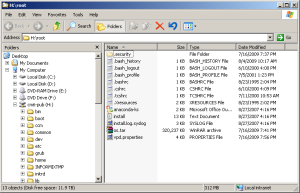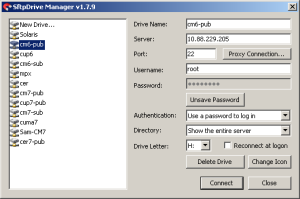A true benefit of MPLS technology is the ability to provide Quality of Service (QoS) guarantees over an IP backbone. QoS on an MPLS backbone is used to provide predictable, guaranteed performance metrics required to transport real time and mission-critical traffic. The providers have an overall QoS architecture that is used to deliver a subset of QoS services to each customer. The provider will have multiple classes of service that the customers must align with in order to leverage the providers’ MPLS offering. The providers must have an MPLS QoS architecture that provides end-to-end guarantees for each class of service for each customer. Cisco, for instance, has defined two models that can be used independently or together to provide the end-to-end guarantees for each customer. Cisco defines these as the point-to-cloud and point-to-point models.
The point-to-cloud or “hose” model allows the provider to provision an ingress committed rate (ICR) and egress committed rate (ECR) for each VPN. The ICR and ECR dictate how much bandwidth is allowed to enter and exit the service provider backbone within a VPN. The best way to describe the scenario is with an example. Let’s say we have a VPN with four sites. Each of these sites can communicate with any of the other sites, forming an any-to-any mesh. The sites are labeled “Site 1” through “Site 4.” I will use Site 1 as the basis for discussion. The ICR can be set to only allow Site 1 to inject 50Mbps of traffic into the cloud. This traffic can be destined to any of the other three sites. The ECR can be set to only allow 30Mbps traffic to exit the cloud to Site 1 from the other three sites. These parameters can be set for each class of service. The provider’s backbone will provide bandwidth and delay guarantees for the traffic thresholds as configured for the ICR and ECR. This model allows the provider’s QoS to be transparent to the customer. The customer can dictate the amount of traffic that is sent to each of the provider’s classes of service. The customer does not have to match the provider’s classifications and the customer markings are preserved.
The point-to-point or “pipe” model allows the provider to build virtual QoS pipes between the customer edge routers that are used to provide bandwidth and delay guarantees. This is analogous to legacy ATM and Frame Relay PVC meshings. However, the provider is responsible for the virtual mesh. Once the virtual QoS tunnels are established the provider can offer traffic engineering across the virtual mesh. Each tunnel would have its own QoS characteristics so that the CE-to-CE QoS guarantees are established prior to transmission of data. This is a more granular approach to QoS and adds complexity to the provider’s configuration. The pipe model is not as scalable as the hose model as it requires CE-to-CE pipes for each customer. (From MPLS QoS models by Robbie Harrell)
Best practices for MPLS interoperability of customer QoS with provider QoS
When planning an internal QoS architecture that will utilize an MPLS VPN as the WAN backbone, it is beneficial to consider the provider’s architecture. Service providers have enabled QoS with their MPLS VPN services. This allows the provider to offer multiple classes of service with SLA guarantees. The service provider’s QoS architecture dictates how a customer’s applications are serviced over their backbones. It doesn’t matter what your QoS architecture is, it will have to be modified to match the provider’s ability to deliver within their service parameters. The reality is that the provider has one QoS architecture and the customers can have many different ones. The provider is not going to adapt their architecture to the client’s — therefore it makes sense to understand what the providers offer before engaging in an internal QoS plan.
- Most providers support only three or four classes of service. Some provide five classes of service, but the majority fall into the first group. Limit your number of classes of traffic to 3-4. You can put any applications you want into these three or four classes, the provider doesn’t care. They will tell you what the performance guarantees are for each class. It is up to you to decide which applications require what guarantees.
- Providers use DSCP for classification and marking. In most cases when you deploy a MPLS VPN WAN, you will need to classify and mark your QoS traffic before you hand it off to the provider. Some providers offer managed services and they will handle the edge router configurations, others provide templates. The customer is responsible for identifying important traffic and initiating a classification scheme. Use DSCP markings rather than IP precedence at the WAN router edge. Most providers follow some form of assured forwarding markings for their classes and you can easily match the providers. If you don’t know the provider’s markings beforehand, use the DSCP standards. (FromMPLS: Interoperability of customer QoS with provider QoS by Robbie Harrell)
| Using MPLS with VoIP | Back to top ↑ |
Meeting QoS guarantees that ensure reliable voice transmissions can be the biggest challenge of deploying voice over IP (VoIP) traffic. Implementing MPLS can help enterprises rise to that challenge because the protocol offers network engineers a great deal of flexibility and the ability to send voice and data traffic around link failures, congestion and bottlenecks.
MPLS is useful as an enabler for VoIP because it provides ATM-like capabilities with an IP network. Unlike the expensive ATM links that would be required to support VoIP, MPLS provides guaranteed services utilizing IP quality of service on the carrier’s backbone. This service and the ability to converge VoIP onto the data network present a tremendous opportunity to reduce operational costs and consolidate infrastructures.
Real-time services are application services that are susceptible to delay, packet loss and jitter. VoIP and video over IP are considered real-time applications. While other applications such as SAP are vulnerable to delay, VoIP and video over IP (with corresponding voice) are the real focus, because if you cannot deliver these applications with a high degree of confidence that the packets will not be dropped, experience delay or jitter, then you cannot deploy these application services. (From Carrier MPLS support for VoIP by Robbie Harrell)
Before VoIP came along few companies ever created a full mesh because there was a cost associated with each permanent virtual circuit (PVC). Instead, companies required traffic in a hub-and-spoke topology to pass from one remote office to another through the hub site, using both its inbound and outbound bandwidth. This was generally OK, because one remote office never talked to another before VoIP.
However, packets don’t fly directly between any two sites. In reality, your packets are probably riding some good old-fashioned frame-relay or ATM network to get from your office to your carrier’s closest MPLS POP. As someone with a keen interest in low-latency, you’ll want to ask some pointed questions about where the MPLS POP actually is located and what the Layer 2 path to get there looks like, because your packets could be taking a scenic route that won’t show up on traceroutes.
Another significant difference between PVCs and MPLS is that the technology really provides no mechanical equivalent of committed information rate (CIR), Committed Burst Size (BC) or Excess Burst Size (BE), etc. However, your WAN provider may like those concepts so much that it tries to replicate the functionality with some truly bizarre policing and remarking configurations. Make sure you understand how they’ve implemented QoS and exactly how they treat your packets that exceed the committed data rate (CDR) and what the thresholds are.
Finally, while it was possible for a provisioned PVC or SVC to change its path through the carrier’s backbone, it’s much more likely to actually happen with traffic-engineered paths in MPLS. You should keep track of how much delay your circuits have, and if you see this number suddenly and mysteriously change, there’s a good chance your packets are taking a different path as a result of a failure or the availability of a better path. (From MPLS — what voice managers need to know by Tom Lancaster)



